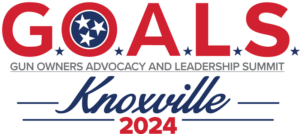7/06 “Crime Guns” In Perspective
by
F. Paul Valone
Raleigh — Voters’ consistent rejection of gun control forces gun opponents to periodically repackage their agenda. Having failed to pass off gang murders as “children killed by guns,” anti-gun organizations now tell tales about “rogue gun dealers” feeding “iron pipelines” of illegal gun trafficking. Despite the new gift-wrap, their unwavering goal is restricting your access to firearms.
Orchestrated by the Brady Center (formerly Handgun Control, Inc.), this national campaign would ration how many guns you may buy and, via mandatory gun tracing, would force the federal Bureau of Alcohol, Tobacco, Firearms and Explosives (BATFE) to gather bogus statistics promoting gun control.
A recent piece on this page alleged that “The primary source of illegal guns is corrupt (or rogue) gun dealers.” In truth, a Department of Justice report entitled “Firearms Use by Offenders” found the largest sources of crime guns are family or friends (39.6 percent), followed by theft and black market sales (39.2 percent). Gun and pawn shops (“rogue” or otherwise) accounted for just 8.3 percent and 3.8 percent, respectively.
And contrary to a claim that “On May 22, Charlotte’s Hyatt Coin and Gun Shop was named by [BATFE] as the fifth worst store in supplying guns used in crimes nationwide,” the bureau said nothing of the sort. Agency spokesman Earl Woodham says it doesn’t even keep such lists. Pursuant to litigation, it actually released raw data on gun serial numbers traced by police.
Therein lies the scam. Although gun control advocates call gun tracing a measure of crime, traced guns are not necessarily “crime guns.” Says the Congressional Research Service: “Trace requests are not accurate indicators of specified crimes… traces may be requested for a variety of reasons not necessarily related to criminal incidents.” Indeed, the BATFE encourages police to trace all guns encountered. Mine was once traced during a traffic stop.
Other inherent biases include variation in tracing policies between police departments (Charlotte traces all guns, skewing results against merchants like Hyatt) and the fact that statistics aren’t adjusted for total number of guns sold by a dealer. After 47 years in business, Hyatt is one of the largest dealers in the country. Were it a similarly successful auto dealer, wouldn’t more cars it sold be involved in accidents?
Claims that the BATFE fails to pursue non-compliant gun dealers are false: Not only do dealers overwhelmingly follow the law, the bureau conducts audits and prosecutes rare scofflaws via a strict “zero tolerance” policy. The bureau’s Woodham said that if allegations about Hyatt were true, it would be “an empty storefront.”
Despite assertions that traffickers obtain firearms from gun shows, the Department of Justice found an infinitesimal 0.7 percent of crime guns come from such shows. Moreover, North Carolina has no real “gun show loophole”: all handgun transfers — including gun show sales — require background checks, and rifles are used in only 1.3 percent of gun crimes.
Anti-gun advocates say trafficking is fed by “straw” sales in which unqualified buyers (e.g., those with criminal backgrounds) use qualified applicants for purchases. These guns are smuggled to strict gun control states such as New York.
But straw sales carry a 10-year federal penalty. Under threat of prosecution — enforced by “sting” operations — gun dealers refuse identifiable straw sales. Indeed, the National Shooting Sports Foundation, representing dealers, has partnered with BATFE to train every dealer via a program called “Don’t Lie for the Other Guy.”
Beyond the irony that smuggled guns cause more problems in strictly regulated states to which they are transported than in less regulated states where they were originally sold, consider that dealers can’t control secondary transfers of guns which have left their stores. Expecting them to track firearms they no longer possess is like expecting car dealers to conduct drunken driving checkpoints.
While Virginia’s “one-gun-a-month” law is hailed as a model for reducing straw sales, Virginia remains the largest source of crime guns in New York and elsewhere. Proponents avoid mentioning cases like that of Shawn Pettaway, who was arrested for using 17 straw buyers to sell 107 Virginia guns to undercover New York police.
Not coincidentally, gun rationing would make it harder for you to buy guns and would require registering guns purchased. Mandatory gun tracing would inflate North Carolina numbers of what gun opponents misleadingly label “crime guns” relative to states without such laws, the “solution” for which would be (you guessed it) more gun control.
While no lawful person wants criminal access to firearms, public policy should be driven by accurate information. Any bill mandating tracing of “crime guns” should equally prohibit tracing guns not used in crimes. If the goal is reducing gun trafficking rather than simply fueling more restrictions, that should satisfy both sides in the debate.
************************
Paul Valone is the president of Grass Roots North Carolina.


